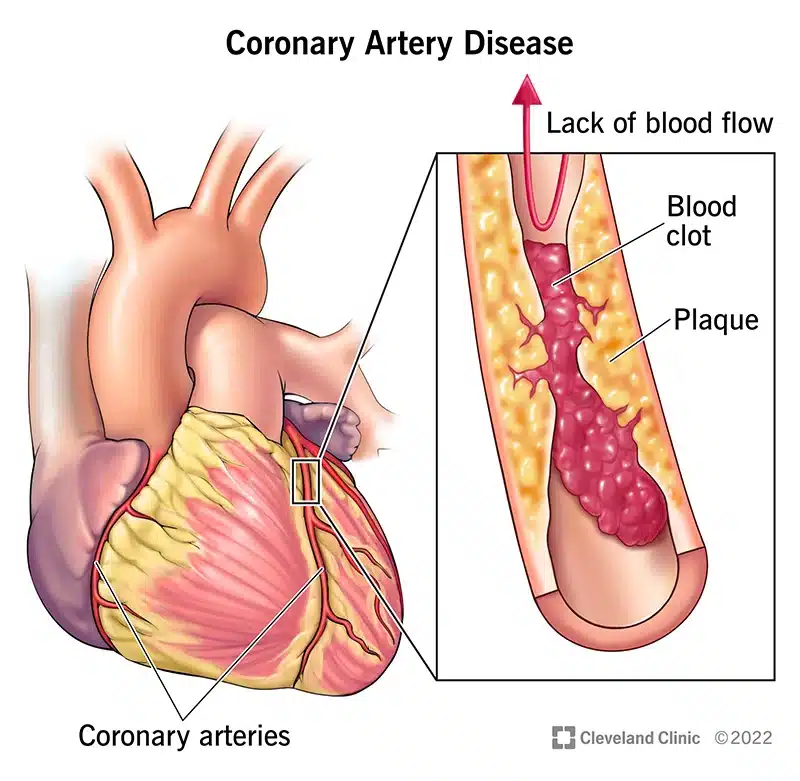1 in 6 Coronary Artery Patients Have Heart Problem
Share IT

Launch Your Dream Website with Us!
Click Here to Get in touch with Us.
Categories
1 in 6 Coronary Artery Patients Have Heart Problem
Millions of people worldwide are afflicted with coronary artery disease (CAD), which is a major cause of mortality. It is brought on by plaque accumulation in the coronary arteries, the blood vessels that carry the heart’s oxygen and nourishment. Breathlessness, chest pain, and other symptoms may result from this accumulation, which may also limit blood flow.
Thank you for reading this post, don't forget to subscribe!Non-ischemic or dual cardiomyopathy is a hidden cardiac ailment that many individuals with CAD also have, as experts have found in recent years. This indicates that, although the cause may not be a coronary artery blockage, the heart muscle is not receiving enough oxygen.
Table of Contents

According to a recent study that was written up in the journal Circulation, non-ischemic or dual cardiomyopathy affects one in six CAD patients. This is an important result because it raises the possibility that these illnesses are more prevalent than previously believed and that they may significantly affect the course of patients’ lives.
More than 3,000 CAD patients were included in the research. 18% of the individuals had non-ischemic cardiomyopathy, and 8% had dual cardiomyopathy, according to the report. This indicates that the heart muscle was not receiving enough oxygen, either as a result of non-ischemic cardiomyopathy or an ischemic cardiomyopathy, which is caused by a blockage in the coronary arteries.
In addition, the researchers discovered that individuals with non-ischemic or dual cardiomyopathy had a higher risk of heart failure-related death or hospitalisation than those with CAD alone. This implies that the prognosis of CAD patients may deteriorate as a result of these disorders.
The study’s conclusions are significant for a number of reasons. Firstly, they imply that dual and non-ischemic cardiomyopathies might be more prevalent than previously believed. Secondly, they imply that these ailments might exert a noteworthy influence on the results of patients. Third, they raise the possibility that individuals with these ailments may require novel approaches to their care.
According to the experts, more investigation is required to identify novel therapeutic approaches as well as the aetiology of non-ischemic and dual cardiomyopathy. Nonetheless, they state that their research indicates that patients with CAD should take these problems into account.
Why does non-ischemic cardiomyopathy occur (1 in 6 Coronary Artery Patients Have Heart Problem )?
Non-ischemic cardiomyopathy can have numerous causes, such as:
- elevated BP
- Diabetes Valve illness
- infections of the heart
- Immune disorders
- hereditary disorders
What signs of non-ischemic cardiomyopathy are present (1 in 6 Coronary Artery Patients Have Heart Problem )?
The degree of non-ischemic cardiomyopathy can affect the symptoms that a person experiences. Among the typical symptoms are:
- Breathing difficulties
- Weary
- swelling in the ankles, foot, and legs
- Pain in the chest
- Lightheadedness or dizziness
How is the management of non-ischemic cardiomyopathy (1 in 6 Coronary Artery Patients Have Heart Problem )?
Depending on the underlying reason, non-ischemic cardiomyopathy will require different treatments. A balanced diet, frequent exercise, and weight loss are just a few examples of how changing one’s lifestyle can help manage the illness. Medication or surgery might be required in other situations.
For non-ischemic cardiomyopathy, what is the prognosis (1 in 6 Coronary Artery Patients Have Heart Problem )?
The underlying aetiology and the severity of the illness determine the prognosis for non-ischemic cardiomyopathy. Many individuals with non-ischemic cardiomyopathy are able to lead long, healthy lives with treatment. Heart failure or other issues, however, can happen to certain people.
It is imperative that you discuss with your physician the possibility of developing non-ischemic or dual cardiomyopathy if you have been diagnosed with CAD. Receiving therapy and diagnosis early on can increase your chances of success.

Launch Your Dream Website with Us!
Click Here to Get in touch with Us.





























































Recent Comments